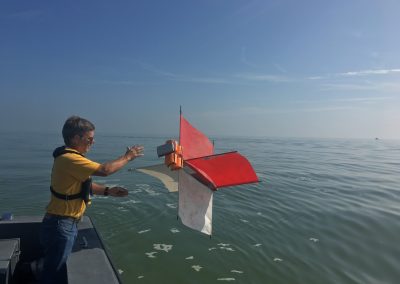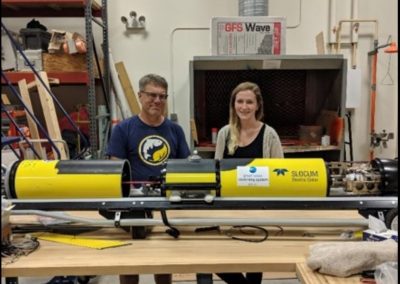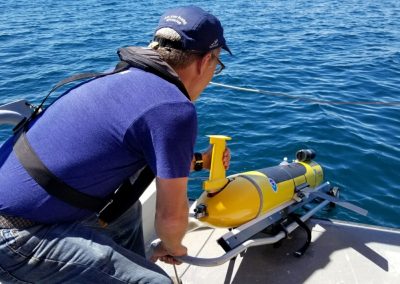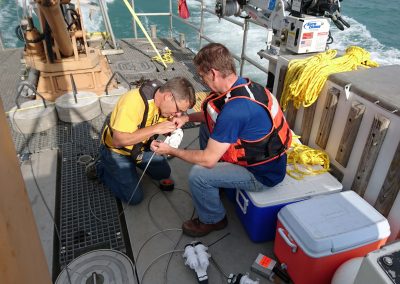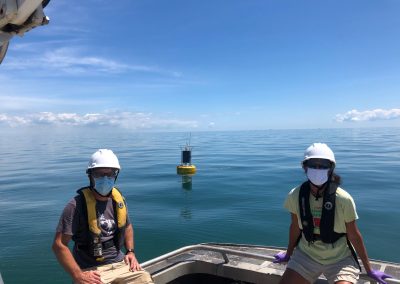Russ Miller
Mechanical Tech Intermediate
4840 South State Road
Ann Arbor, MI 48108-9719
In the News:
- CIGLR’s Research Staff Provide Critical Information on Lake Erie’s Harmful Algal Blooms During the COVID-19 Pandemic, CIGLR Fall 2020 eNews, 12/22/2020
- Spotlight: Great Lakes Photo Field Guide to 2020 Summer Research, CIGLR Summer 2020 eNews, 09/2020
- Featured Research: CIGLR Research Continues to Support NOAA’s Mission; Begins Phased Return to Critical Fieldwork, CIGLR Spring 2020 eNews, 06/2020
- Eight years of Great Lakes underwater glider data now available to the public, NOAA Great Lakes Environmental Research Laboratory’s Blog, 3/4/2020
- Great Lakes Gliders Help Monitor Water Quality and Inform Hydrodynamic Models, CIGLR Fall 2019 eNews, 12/2019
- ‘Smart’ buoys and NOAA models Help Cleveland with More than Weather, Weather Nations, 3/6/2019
- Eight years of Great Lakes underwater glider data now available to the public, NOAA Great Lakes Environmental Research Laboratory’s Blog, 3/4/2020
I am an Observing System Engineer and the Observing Systems Theme Lead for the Cooperative Institute for Great Lakes Research (CIGLR) at the University of Michigan. Since 2011 I have been responsible for Uncrewed Underwater Systems and Environmental Buoy operations and development for CIGLR. My projects include environmental buoy and autonomous glider operations for the Great Lakes Observing System (GLOS), and development and operations of the Western Lake Erie Nutrient Buoy network for the SOAR project. I am interested in increasing the density of observations in the Great Lakes by reducing the cost and infrastructure needed to deploy and maintain sensors in the field and increasing their reliability.
Education:
- BS Mechanical Engineering, California Polytechnic State University, San Luis Obispo (1988)
Research Interests/Area of Expertise:
- Autonomous Systems Development and Operations
- Instrument Evaluation and Integration
- Systems Reliability
Publications:
Smith, J.P., R. Miller, R.W. Muzzi, S.A. Constant, K.S. Beadle, D. Palladino, T.H. Johengen, and S.A. Ruberg. 2017. An Implementation of a Database Management System for Real-Time Large-Lake Observations. Marine Technology Society Journal. 51(6):5-9. (DOI:10.4031/MTSJ.51.6.2).
Moore, T.C., H. Feng, S.A. Ruberg, K.S. Beadle, S.A. Constant, R. Miller, R.W. Muzzi, T.H. Johengen, P.M. DiGiacomo, V.P. Lance, B.N. Holben, and M. Wang. 2019. SeaPRISM observations in the western basin of Lake Erie in the summer of 2016. Journal of Great Lakes Research. 45(3):547-555 (DOI:10.1016/j.jglr.2018.10.
Vander Woude, A., S.A. Ruberg, T.H. Johengen, R. Miller, and D. Stuart. 2019. Spatial and temporal scales of variability of cyanobacteria harmful algal blooms from NOAA GLERL airborne hyperspectral imagery. Journal of Great Lakes Research. 45(3):536-546. (DOI:10.1016/j.jglr.2019.02.
Photo Gallery
CIGLR Scientist Russ Miller, deploying a GPS-enabled Lagrangian drifter in the western basin of Lake Erie. Photo Credit NOAA GLERL.
Russ Miller (left) and Lauren Marshall (right) completing glider maintenance. Photo Credit: Aubrey Lashaway (2019).
CIGLR’s mechanical technician Russ Miller deploying a glider in Saginaw Bay, Lake Huron. (June 2017, Lake Huron Quagga Mussel Growth Cage Experiment). Photo Credit: Paul Glyshaw.
NOAA GLERL/CIGLR Coastal Hypoxia Research Program (CHRP). CIGLR’s Russ Miller and Tom Johengen installing a chain of oxygen sensors. Photo Credit: Dack Stuart, CIGLR.
Video Library
Buoys aren’t the only thing collecting data while floating through Great Lakes waters. Researchers also use robotic underwater gliders that travel for miles to collect data on organic matter, conductivity, oxygen content, and more, sometimes staying out for three months! The Great Lakes Observing System just purchased a brand new Slocum G3 glider, and our partners at the Cooperative Institute for Great Lakes Research have been hard at work getting it prepped for its first mission. Watch as Russ and Hayden “unbox” the glider and explain what this amazing device is capable of.

